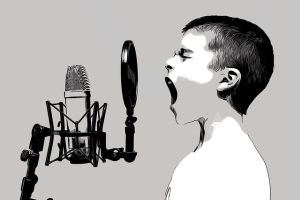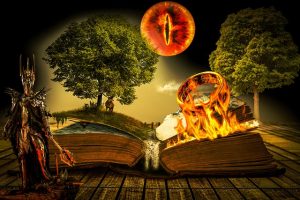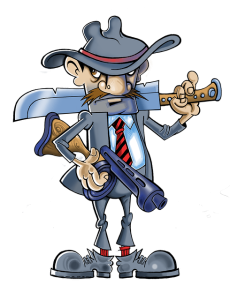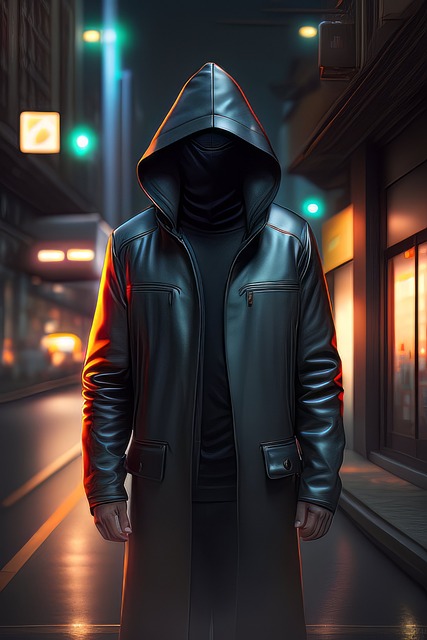Are you looking to craft a true killer character for your thrilling story? Crafting a gripping character personality is essential in developing a suspenseful and captivating thriller.
This blog post will explore how to develop a character personality that will leave readers on the edge of their seats, eager to see what happens next. Fasten your seatbelts and get ready; it’s time to learn how to create the perfect chilling personality!
Understand your character’s background
What shaped their life and how they think and act
A character’s background is critical to creating the perfect chilling personality. Understanding where your character comes from, what experiences have shaped them, and how these events have affected their outlook on life is essential. These factors can influence how they think, act and react in any given situation.
An excellent place to start is by answering some basic questions: What kind of impact did their childhood have on them? Did they experience trauma, abandonment, neglect, or abuse? Did they witness events that shaped how they view the world? How do these experiences shape their personality today?
You should also consider what drives your villain. Is it a desire for revenge, power, or to take control over something that has wronged them in life? This information will help mold your character into the most menacing foe possible.
Once you have an idea of who your villain is based on their background story, you must think about ways to bring this character alive through physical features and behavioral traits.
Physical features like clothing choices – such as wearing dark colors representing darkness and evil – can significantly alter how people perceive your character, just like solid facial expressions that convey anger or determination can effectively show off the intensity behind their mission.
Additionally, behaviors such as using cruelly sarcastic phrases when communicating with others or even being extremely calculating with decision-making reflect silent menace from within and will give readers/audiences chills when interacting with them!
Develop a unique voice for the character

How will your character express themselves and stand out to readers
Developing a unique voice for your villain can be one of the most exciting and engaging aspects of writing. How will they express themselves? Are they eloquent with their words, or do they prefer a more blunt approach?
The voice should provide the reader insight into the character’s motivations, goals, and personality. It needs to shine through in dialogue, actions, and even internal monologue.
– First, decide what sounds fit into the narrative you want your villain’s story arc to follow. Think about their environment; this will help provide direction for their vocal tone and style of speech. Do they live in an isolated rural setting or a bustling city? Are they educated or uneducated? What kind of people do they mingle with? Answering these questions will help inform you what kind of vocabulary and dialect should be used when crafting a unique voice for them.
– Next, think about how their physical attributes tie into their way of speaking. Does your villain possess any unusual mannerisms or facial expressions when speaking? It could be anything from certain words emphasized at random intervals (like breathing heavily) to exaggerated hand gestures or ticking facial tics (like narrowing one eye).
– Another way to bring out a villain’s unique character is through their relationships with other characters. Exploring how they interact with those around them will offer insight into their values and foreshadow potential future conflict points between protagonists and antagonists!
– Also, you could include moments where the bad guy reveals his agenda openly or subtly offer clues by hinting at details over time while working together with someone else on seemingly insignificant matters.
These good character developments can add depth and layers to make them seem more than just one-dimensional!
Create contradictory character traits
Creating contradictory personality traits can help create an air of unpredictability that intrigues readers. Make sure to give your characters conflicting emotions and motivations that will have them act in ways you don’t expect. Flaws make your character human, and this is what will make them both chilling and compelling.
Here are a couple of examples to demonstrate this:
– One example would be Voldemort from the Harry Potter franchise. He was pure evil but also profoundly obsessed with immortality and power, both ambitions which ultimately proved to be fatal flaws when faced against Harry Potter’s courage and loyalty in destroying him during their epic battles.
– Another example could be Catwoman from DC Comics, who almost always works outside the law. Yet, her criminal acts are usually borne out of a desire for financial freedom rather than malice or violence toward others.
These examples show us that although villains may have bad intentions, they can still demonstrate unexpected depths, making them complex characters capable of redemption, if not always sympathetic ones.
Ultimately, developing a chilling villain requires more than crafting his background – it involves thoughtfully deciding on physical attributes reflecting inner darkness and behaviors emphasizing his ruthlessness!
Create conflict and goals

What drives your character forward in the story, and what is stopping them from achieving their goals
It’s important to understand that villains come in all shapes and sizes, each with unique goals and conflicts. Villains can be complex characters – they often have nuanced motivations, relatable backgrounds, and powerful drives.
Let’s look at some examples of popular culture villains to understand better the various conflicts and goals a villain might face.
The Joker from Batman: This iconic foe is driven by chaos for its own sake. His crazed desire is to create as much destruction as possible – without any real plan or purpose behind it other than having a good time doing it! He has no qualms about playing both sides against one another to achieve his ultimate goal. His conflict comes from his repeatedly thwarted attempts by Batman, who stands between him and complete anarchy over Gotham City.
The White Witch from The Lion, the Witch & The Wardrobe: She seeks ultimate power over Narnia itself through her use of magic spells and desecration of nature itself; her goal is total control over everyone within the kingdom so she may rule them for eternity – unless Aslan defeats her in battle first! Her conflict lies within herself in her lust for absolute power. It needs to stay vigilant against any potential uprising against her authority… which ultimately leads to her demise at the hands of Aslan when all else fails!
Sauron from The Lord of the Rings: Sauron is the main character whose goal is to conquer Middle-Earth and bring it under his rule using the power of The One Ring he had created. His conflicts come from Aragorn, Frodo Baggins, as well as all other forces opposing him, such as Elves, Dwarves, and Men coming together with one collective goal – stopping Sauron from achieving what he desires most – having total control over Middle-Earth.
Each villain’s story offers insight into our struggles with ambition versus morality, making these characters incredibly memorable.
Add interesting details

Give your character some exciting quirks, hobbies, or physical features to make them more memorable
Villains are often complex characters, characterized by a fascinating combination of traits that can make them both villainous and endearing at the same time. Here are some examples of exciting quirks, hobbies, or physical features found in villains from popular films and television shows:
– Dragon Ball Z‘s Frieza is a common example of an iconic villain with an interesting physical feature – his four-fingered hands and feet. This unique trait, combined with his signature purple skin (which resulted from intense radiation exposure), makes him stand out among other villains in the series.
– The Joker from Batman has one of the most recognizable looks in all comic books – long green hair, white skin, red lips, and a wide smile filled with razor-sharp teeth. His makeup and wardrobe have become instantly iconic due to their intricate details.
– Another fun quirk about The Joker? He loves gag gifts like giant rubber chickens or whoopee cushions as they symbolize the chaos he thrives in!
– Voldemort from Harry Potter fame often speaks in a low drawling voice that sends shivers down your spine! It’s not only creepy but effective, too; it also slowly builds suspense whenever he appears on screen!
– Scarlett Witch is a powerful Avengers villain whose hobby is baking muffins during her free time! While this seems innocuous at first glance, it symbolizes how she uses her powers – sometimes for good (baking delicious treats), other times for ill (stopping enemies dead in their tracks).
– Last, we have Game Of Thrones’ Ramsay Snow; this incredibly heinous character has a majorly twisted sense of humor which manifests itself through cutting remarks against anyone around him…and sometimes even himself!
Build antagonists & obstacles
Who is standing in the way of your character’s success, and why do they hate each other so much
To make your story even more thrilling, create antagonists and obstacles for your character. Who stands in the way of their success, and why do they hate each other so much? Building these relationships can help craft an intense atmosphere that will draw readers in.
Here are some common examples of antagonists and obstacles for villains:
1) Family members – Whether it be a parent, guardian, or sibling that stands in the way of a villain’s goal, family members are secondary characters that can provide powerful emotional drama and physical dangers to drive the story onward.
2) Other villains and rivals – Villains often have peers who stand in each other’s way. This makes for great special effects scenes where two enemies face one another, aiming to come out on top.
3) Nature and natural disasters – Natural disasters like earthquakes, hurricanes, tsunamis, etc., can provide backdrop action sequences for villains that are particularly thrilling when combined with artificial destruction caused by our hero’s mission!
Let your character grow throughout the story
Show how the character’s personality evolves as they try to overcome obstacles
This will show readers how much you care about your character and aren’t afraid to make them vulnerable in order to create a captivating story.
One key element that can help your villain grow throughout the story is to show how their motivation changes over time. This could be in response to what other characters do or because of events within the story’s plot.
For example, if a hero defeats a villain during one scene but then spares them instead of killing them, this could change their views and alter their perspective on life. By showing such scenes realistically and with thorough detail, you can demonstrate how your villains have grown since their initial actions – which may make them an even more ambiguous figure for arriving at the climax of your tale.
With these tips in mind, you’ll be able to craft a truly chilling character personality that will have readers wanting more. So don’t be afraid to take risks and create something unique – it might lead to something truly memorable!
Conclusion
Creating a great character can be hard work, but the results will be worth it. Whether you are writing a short story, a novel, or comics, create believable characters, and your story comes to life. With just a few simple steps—understanding your character’s background, developing a unique voice, creating interesting and believable conflicts and goals, adding creative details, and building antagonists and obstacles—you can craft a dynamic character with depth and passion.
So give yourself time to bring these interesting characters to life – you won’t regret it!
Thank you for taking the time to read. May you find success and joy in all that you create.
If you’re working on your first novel and are looking for more help with your writing, please check out my other articles at https://ullahakanson.com/blog/
Best of luck with your writing!
Ulla
www.ullahakanson.com

